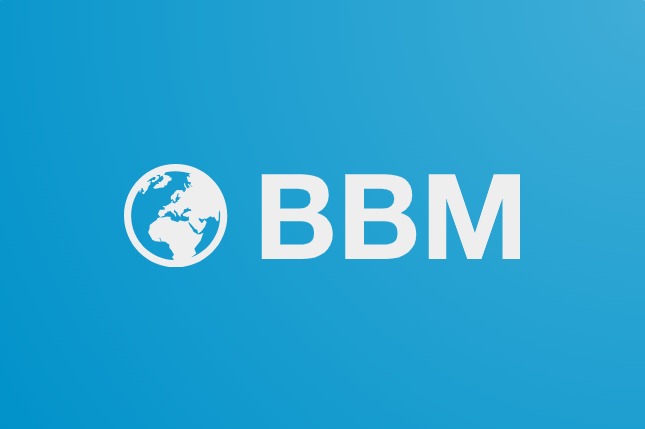Some of the links in this article are "affiliate links", a link with a special tracking code. This means if you click on an affiliate link and purchase the item, we will receive an affiliate commission.
The price of the item is the same whether it is an affiliate link or not. Regardless, we only recommend products or services we believe will add value to our readers.
By using the affiliate links, you are helping support our Website, and we genuinely appreciate your support.
[matched_title]

The corporate world has long been plagued by a language barrier of its own making: jargon. Slogans like “synergy,” “circle back,” and “touch base” have become synonymous with obfuscation rather than clarity. But in 2025, AI tools like ChatGPT and Gemini are dismantling these barriers, exposing the inefficiencies of corporate speak while reshaping how workers define their roles. This shift is not just a cultural phenomenon—it’s a seismic investment opportunity.
The Jargon Problem and AI’s Disruptive Role
Corporate jargon exists for a reason: it creates a sense of exclusivity, signaling insider status in industries where complexity is a currency. But in practice, it stifles communication, slows decision-making, and alienates talent. AI is now acting as a universal translator. Large language models (LLMs) can distill dense technical documents into plain language, automate repetitive tasks, and even coach employees on how to articulate ideas without relying on buzzwords. For example, Google’s Gemini 1.5 Pro can process two million tokens of text, enabling it to summarize lengthy legal contracts or engineering specifications in seconds. This isn’t just efficiency—it’s a redefinition of what it means to be “professional.”
The implications are profound. A McKinsey report estimates that AI-driven productivity gains could add $4.4 trillion to the global economy by 2030. But the real value lies in the human element: as AI handles the cognitive drudgery, employees are freed to focus on creativity, strategy, and collaboration. This shift is already altering workforce identity. Workers no longer need to master jargon to prove their worth; instead, they’re being evaluated on their ability to leverage AI tools to solve problems.
Pioneers in AI-Driven Professional Development
The companies leading this transformation are those that combine cutting-edge AI with a deep understanding of human capital. Here are four standout players:
-
Eightfold AI
Eightfold’s Talent Intelligence Platform is redefining recruitment and retention. By using AI to analyze skills, not just resumes, the company helps organizations identify candidates who can thrive in a jargon-free, AI-augmented workplace. Its partnerships with the U.S. Department of Defense and state governments highlight its scalability. With $90.6 million in annual revenue and a focus on reducing bias in hiring, Eightfold is a prime example of how AI can democratize talent pipelines. -
Adobe
Adobe’s Firefly Video Model exemplifies how AI is transforming creative workflows. By enabling users to generate IP-friendly video content from text prompts, Adobe is empowering creatives to bypass traditional bottlenecks. This aligns with a broader trend: 65% of senior executives now attribute growth to AI and predictive analytics, according to Adobe’s 2025 AI and Digital Trends report. The company’s ability to unify data and scale AI adoption positions it as a leader in the professional development space. -
Inflection AI
Inflection’s enterprise AI agents, such as Pi, are being deployed to enhance workplace communication and personalized learning. The company’s recent acquisitions of BoostKPI and Jelled.ai have expanded its capabilities in data analytics and team collaboration. While its $3.8 million revenue in 2025 may seem modest, Inflection’s focus on conversational AI and enterprise solutions suggests strong growth potential as businesses prioritize human-centric AI. -
Scale AI
Scale’s Generative AI Platform is a critical infrastructure provider for foundational model training. With nearly $1 billion in ARR as of August 2024, Scale is capitalizing on the surge in demand for data labeling and model validation. Its Nucleus platform ensures transparency in AI development, a key concern for enterprises seeking to comply with evolving regulations. Scale’s task-based pricing model and 50%+ gross margins make it a compelling long-term investment.
The Investment Landscape: Trends and Risks
The AI investment landscape in 2025 is marked by both optimism and caution. U.S. private AI investment hit $109.1 billion in 2024, with generative AI attracting $33.9 billion—a 18.7% increase from 2023. However, valuations are cooling as investors demand clearer revenue models. AI-native companies with mid-term Annual Recurring Revenue (ARR) growth and profitability are favored over speculative bets.
For instance, Scale AI’s valuation of $13.8 billion (as of 2023) reflects confidence in its infrastructure role, but its path to profitability remains a watchpoint. Similarly, Adobe’s focus on customer data and analytics aligns with the 79% of executives planning to increase spending in these areas. Yet, the risk of “AI washing”—overhyping capabilities—persists, particularly in non-AI-native sectors.
Strategic Recommendations for Investors
- Prioritize AI-Native Platforms: Companies like Eightfold AI and Scale AI, which are built on proprietary AI technologies, are better positioned to scale than those retrofitting legacy systems.
- Monitor Talent Transparency Metrics: Look for firms that integrate AI into skills intelligence and workforce planning, such as Eightfold’s automated skill tagging or Scale’s Nucleus platform.
- Diversify Across Verticals: While horizontal platforms (e.g., Adobe) offer broad appeal, vertical-specific solutions (e.g., Inflection AI’s enterprise agents) can capture niche markets with higher margins.
- Assess Regulatory Readiness: As AI governance frameworks evolve, companies with transparent practices (e.g., Anthropic’s 51/50 transparency score) will gain a competitive edge.
Conclusion
The AI revolution is not just about smarter machines—it’s about redefining human potential. By eliminating jargon and streamlining communication, AI is creating a more inclusive, efficient workforce. For investors, the key lies in identifying companies that bridge the gap between technological innovation and human-centric outcomes. Eightfold AI, Adobe, Inflection AI, and Scale AI are not just solving today’s problems; they’re building the infrastructure for tomorrow’s workforce. As the market continues to evolve, those who invest in clarity—both in communication and in strategy—will reap the greatest rewards.
BBM JOB




